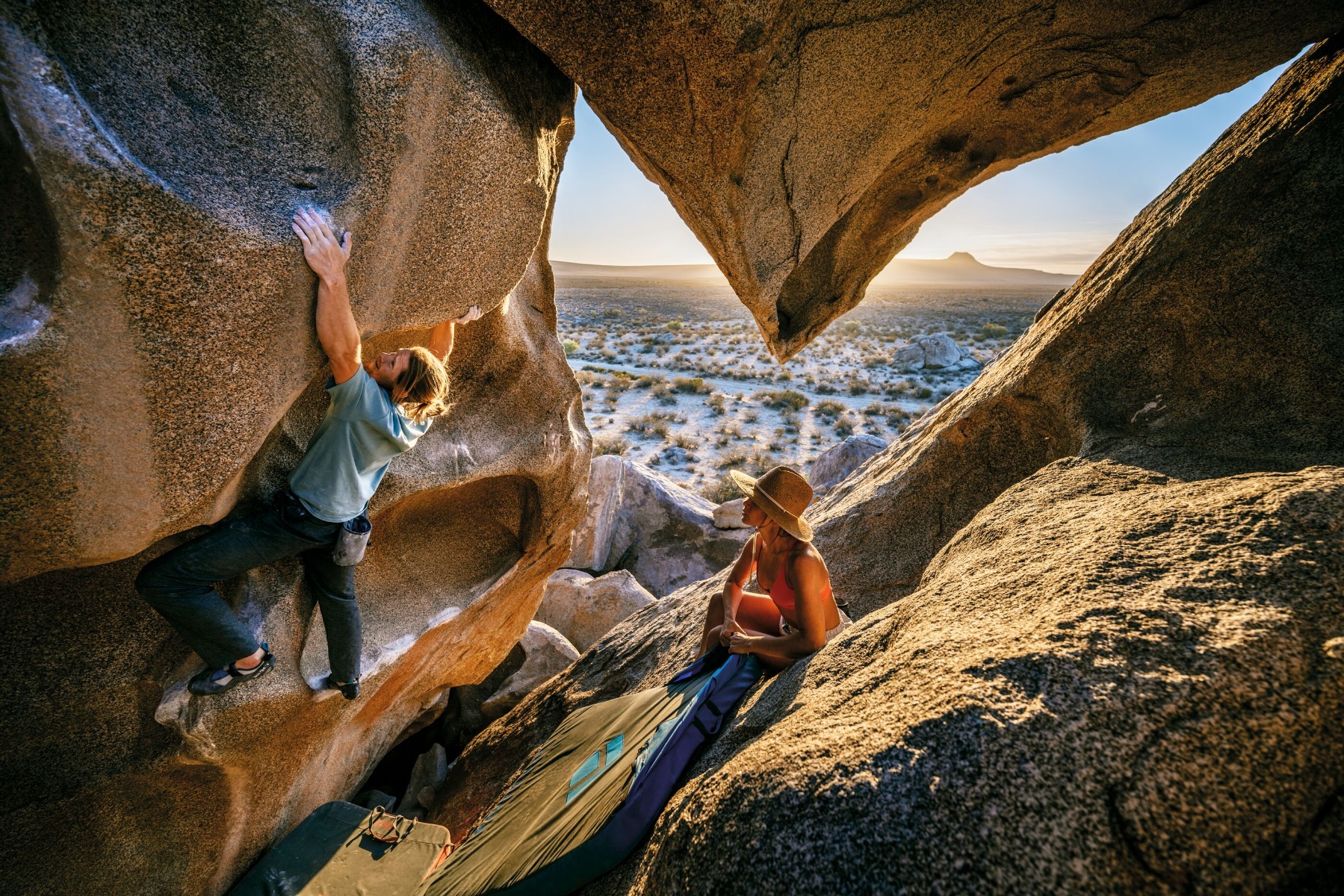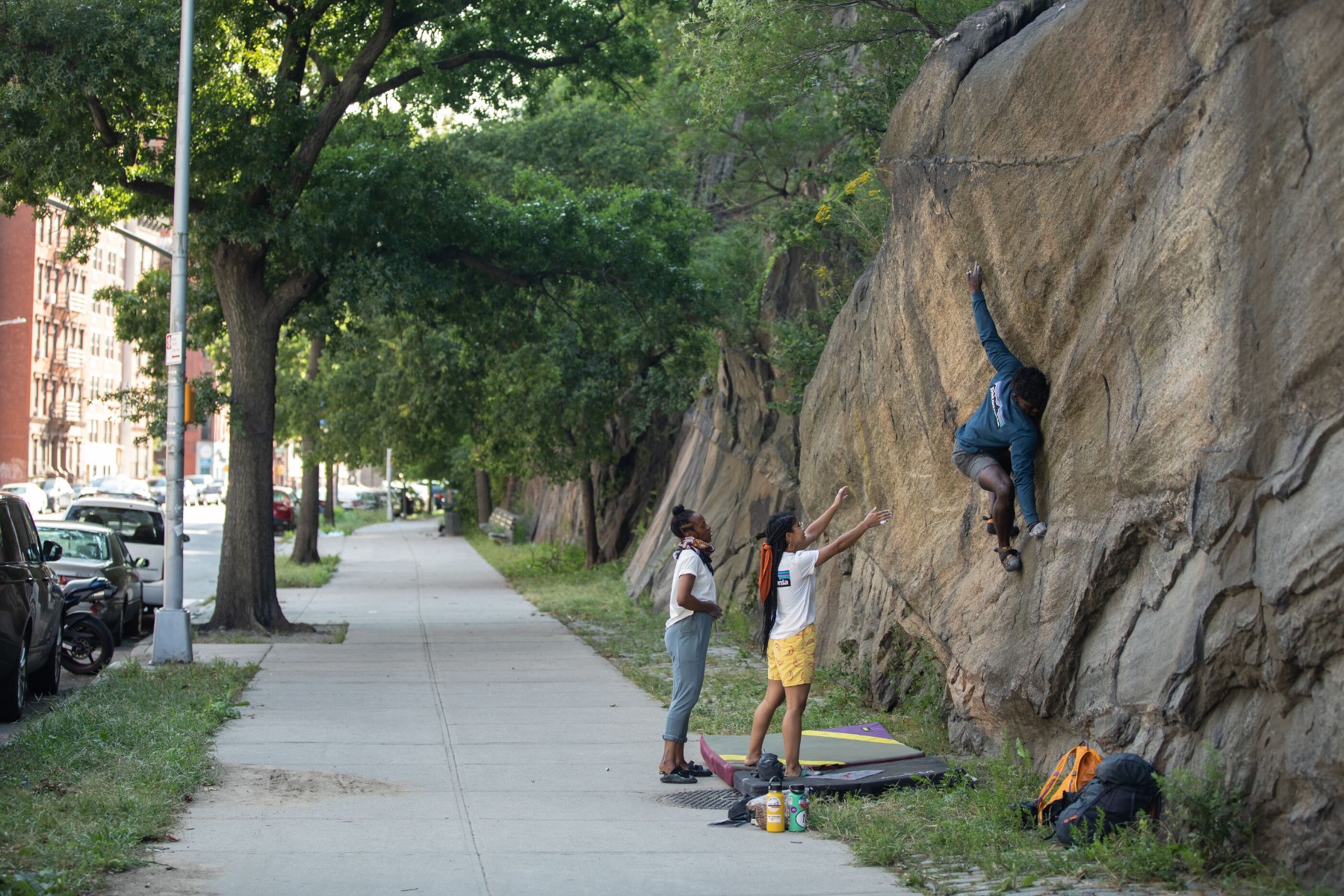Those who are tall complain about their legs that are too long to fit the sit starts, and those who are short can't reach the holds; those who have a muscular body say that they weigh too much, and those who are thin complain about having too few muscles. In short, the excuse is always ready, but who is really right? The first to talk about it has probably been Alessandro Jolly Lamberti in the first volume of Jollypower, where he dedicated entire paragraphs to the dilemma of who has the "ideal" body type.
But first, we need to make an important distinction, especially when we talk about "specialists" of different disciplines: until a few years ago, when climbers generally devoted themselves to a specific discipline without "contamination" with other realities, there were obvious differences between the physique of the boulderer and that of the sport climber.
To be precise, we should also understand what kind of rock climber we are talking about. There are those climbers who have as a home crag Buoux with amazing slabs, where being tall and skinny can be really helpfull, and other climbers who try hard projects in the Laboratori in Margalef with bouldery and short routes concentrated in ten meters of explosive force. But let’s go in order, deepening some of the clichés you often hear saying by climbers from all over the world.

Climber Arnaud Petit, credits Samuel Bié, SCARPA
Pros of being slim
First of all, let’s talk about the slim build, generally attributed to young climbers or girls. It is often seen as a strong point in so far as that the lower the weight of the climber and the lower the strain on the tendons and cartilage of the fingers. On slabs - be it on a boulder or on a wall of thirty meters - being tall and slim often rewards with less delicate movements of feet and greater ease in reaching distant outlets. Here also comes into play the ape index, but we’ll talk about this later.
Another phrase we often hear in climbing environments is that "slim" climbers get less pumped, and this is scientifically proven. The less muscle mass you have, the less you perceive the temporary lack of blood connected to the "isometric" phase of climbing. That is why generally the younger they are, the less they need to stop and rest while climbing.
This does not mean that losing weight can be an option among the possible strategies to improve climbing: the priorities, before wondering if your proportion of height and weight is "optimal for climbing"The improvement of the technique and the attention to mental aspects remain. In fact, let’s not forget that "less muscle mass also leads to greater difficulty in making physically demanding movements in the most ruthless walls" (source: Climbing Bible).

Credits Schreiber Poetter Edelrid
Boulderer's body type
is it better to be tall?
As for the perfect body type for bouldering, the opinions of climbers could not be more varied. Some people say if you’re tall, you’re better at bouldering. It does not seem to us a statement that comes from any scientific source and we see the demonstration every day in the gym, when young climbers who do not yet have our height climb up to the top, swinging from hold to hold. There are undoubtedly individual situations in which having short or long levers can help us or not, but they are mostly single movements and not generalized benefits.
Short levers wins in sit starts
If we find a boulder problem with a very "compressed" sit start, the slightly lower climbers will be advantaged because of their short levers, which will help them take unlikely positions under a roof with a heel behind the ear. It cann lso be true for the highly overhanging walls where you need to raise a lot your feet, a type of movement that can result more difficult for anyone with long levers. On the other hand, in one or two-handed dynos, or in compression movements (as in many Fontainebleau boulders), height can make a difference, along with coordination, power and definitely trained backs. We can briefly say it does not depend on sport climbing or bouldering, but on the climbing style.

Ken Etzel, Patagonia
What ape index is all about
The ape index is the ratio between the length of your arms stretched parallel to the ground (from one end to the other) and your height. According to the Vitruvian man represented by Leonardo da Vinci, the perfect proportion between these two lengths is 1, but according to the climbers, the greater the difference, the easier you will be in reaching the holds. For this reason we estimate that at least half of the evenings between climbers always ends with the verification of who has the better ape index (putting sternum against sternum to make a first purely visual estimation), with consequent appellation of "privileged" for those who have a visibly higher than normal ratio.

Andrew Burr, Patagonia
The only absolute truth
The easiest way to achieve the best in climbing is to enhance our strengths, or develop our own climbing style that enhances the potential of our body. On the other hand, the heterogeneity of athletes in the world of competitions show us that there are so many other aspects to consider. In spite of the height, we mention only three of the women under the meter and sixty who are very strong in competitions: Jain Kim 153cm, Alex Puccio 157 cm (and boulderer!) and Sasha Digiulian 157 cm!
Source: Jollypower vol 1, Climbing. Cover photo: Arnaud Petit_ photographer Samuël Bié, courtesy of SCARPA
